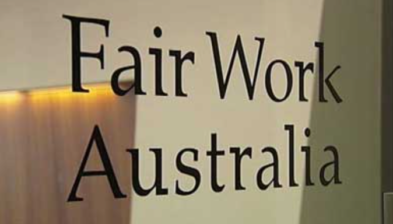Jailed for a workplace COVID death? A look at industrial manslaughter laws - HRM
By Alan J. McDonald

The laws of various states can result in severe penalties for workplace deaths. What does HR need to know?
Australia’s various industrial manslaughter laws make it simpler to prosecute organisations when it comes to workplace fatalities and impose harsher penalties on those found guilty, but they do not change the compliance standard of existing workplace health and safety (WHS) laws.
So while it’s true, as the Herald Sun reported, that bosses in Victoria could potentially be jailed for 20 years under the state’s new industrial manslaughter law over a fatality related to a someone who contracted COVID-19 in the workplace, this is not going to happen in any organisation that is compliant with WHS regulations as they existed before 1 July (when the law went into effect).
“In a practical sense, the new laws do not create any new obligations on employers, but merely impose a greater offence that is subject to a different legal test,” says Alan McDonald, managing director of employment firm McDonald Murholme.
To date there has only been one conviction of a business under an industrial manslaughter law, and no convictions of any individuals. So we don’t know how real-world cases will shape the law over time. That being said, it’s worth reviewing the law around workplace deaths in light of the continuing pandemic.
Industrial manslaughter vs WHS offences
While there are differences across the states, in general it is an offence under WHS laws to fail to provide a safe workplace, insofar as that is “reasonably practicable”. Industrial manslaughter laws come into effect when such a failure leads to a death.
Currently the following states and territories have individual laws covering industrial manslaughter:
- ACT
- Northern Territory
- Queensland
- Victoria
While industrial manslaughter has much more severe penalties, it is not the only offence that could result in prison time. Various WHS laws allow employers to be prosecuted and imprisoned for significant breaches (not just deaths) – individuals in Queensland found guilty of a category one offence under section 31 of the WHS Act can be sentenced to up to five years in prison, for example.
Criminal codes of the states also allow prosecutions for manslaughter, though they are often harder to tie to workplaces. What the industrial manslaughter laws introduce is more careful outlining of when individuals are responsible for a workplace death, and when companies are. In particular they outline how the conduct of “senior officers” (executives, company directors, general managers, etc) can be tied to a death.
This is crucial as smaller businesses, where the leaders are more likely to have a hand in day-to-day decisions, were relatively easier to tie to breaches workplace safety without industrial manslaughter laws. Leaders from larger companies tend to be more protected by layers of management.
Worksafe Queensland offers a hypothetical that explains this, which HRM summarises below:
A worker at a construction company suffers a minor stroke and hands their project manager a medical certificate outlining that fact, and their doctor’s advice that they should not work a crane.
The COO of the company then instructs all project managers to reduce costs by cutting back on safety measures. The worker’s project manager is under pressure to reduce costs broadly. Because of this, they order the worker to operate a crane until a replacement can be found. While doing so, the worker suffers a major stroke, causing the crane to swing wildly and kill another employee.
Under the industrial manslaughter laws of Queensland, the cost-cutting policy could potentially be linked with the actions of the project manager, and so used as evidence to prosecute the company.
As Worksafe Queensland explains, the company could have been prosecuted under the criminal code but “a top-level manager would need to be identified as the directing mind and will” of the company. This extra burden of proof is a reason the manslaughter law was created.
There are other differences that make industrial manslaughter prosecutions simpler. Looking at Victoria, McDonald says the new industrial manslaughter laws are different from a breach of section 21 of the state’s Occupational Health and Safety Act because that can be contravened irrespective of:
- the mental state of the employer at the time;
- whether the omission causes any actual harm; or
- whether any actual harm actually eventuated.
In other words, industrial manslaughter applies when an actual death occurs, not just when an employer is recklessly indifferent to a breach in its duty to provide a safe workplace.
If a death does occur, the industrial manslaughter law makes it simpler to prove industrial manslaughter as the mental state of the employer is no longer relevant. The reason for this is that Victoria’s OHS Act penalty is defined by recklessness and the manslaughter law by negligence.
Negligent vs recklessness
“A person will be reckless about causing injury if they were aware that when they committed the act, that it would probably cause an injury,” says McDonald. “So it refers to a subjective state of mind. In contrast, negligence is based upon what a reasonable person ought to have done in the circumstances.”
You can see why it’s more difficult to prosecute reckless. In a lot of cases it’s hard to prove what someone was thinking at any given point, as you need evidence that reveals their state of mind. The test of “you ought to have done this” is much simpler.
So what would it take to be convicted of manslaughter for a COVID-19 death caused by a workplace infection? The first hurdle for any prosecution would be proving a link.
“In light of the difficulty in precisely identifying the source of COVID-19, and its incubation period, it will be very difficult to prove that an organisation’s conduct caused an employee to contract the illness and subsequently die,” says McDonald.
If a link is established the next step is proving the breach in safety responsibility was responsible.
“The new industrial manslaughter laws require that for an employer to be found criminally liable, they must have been negligent, and this negligence must have caused the death of the employee,” says McDonald. “The employer’s breach of the duty of care must be such that an ordinary person would regard it, as a matter of common sense, to be the cause of the death.”
HRM has previously covered what WHS should look like in a pandemic – it includes providing training to staff, social distancing measures and hygiene facilities.
McDonald offers the following three points as representative of what employers are required to do:
- provide information about health risks posed by contact with the COVID-19;
- provide instruction about ways to minimise those health risks; and
- monitor, assess and take steps to mitigate the risks that COVID-19 poses to health and safety of workers in their workplace.
It’s also worth noting that these responsibilities extend to employees who are working at home.
Reference: ‘Jailed for a workplace COVID death? A look at industrial manslaughter laws’, HRM, Wednesday 26th August 2020.
-
 High Uni Fees but Academics Underpaid
High Uni Fees but Academics Underpaid -
 Reserve Bank interest rake hike and job losses
Reserve Bank interest rake hike and job losses -
 Labour shortages, inflation, recession looming and workplace disputes
Labour shortages, inflation, recession looming and workplace disputes -
 Paid family and domestic violence leave is to be introduced in Australia: here’s how it affects you
Paid family and domestic violence leave is to be introduced in Australia: here’s how it affects you -
 Virtual assistants; mumpreneurs’ secret weapon
Virtual assistants; mumpreneurs’ secret weapon -
 McDonald Murholme guide to the Fair Work Act – The Australian
McDonald Murholme guide to the Fair Work Act – The Australian